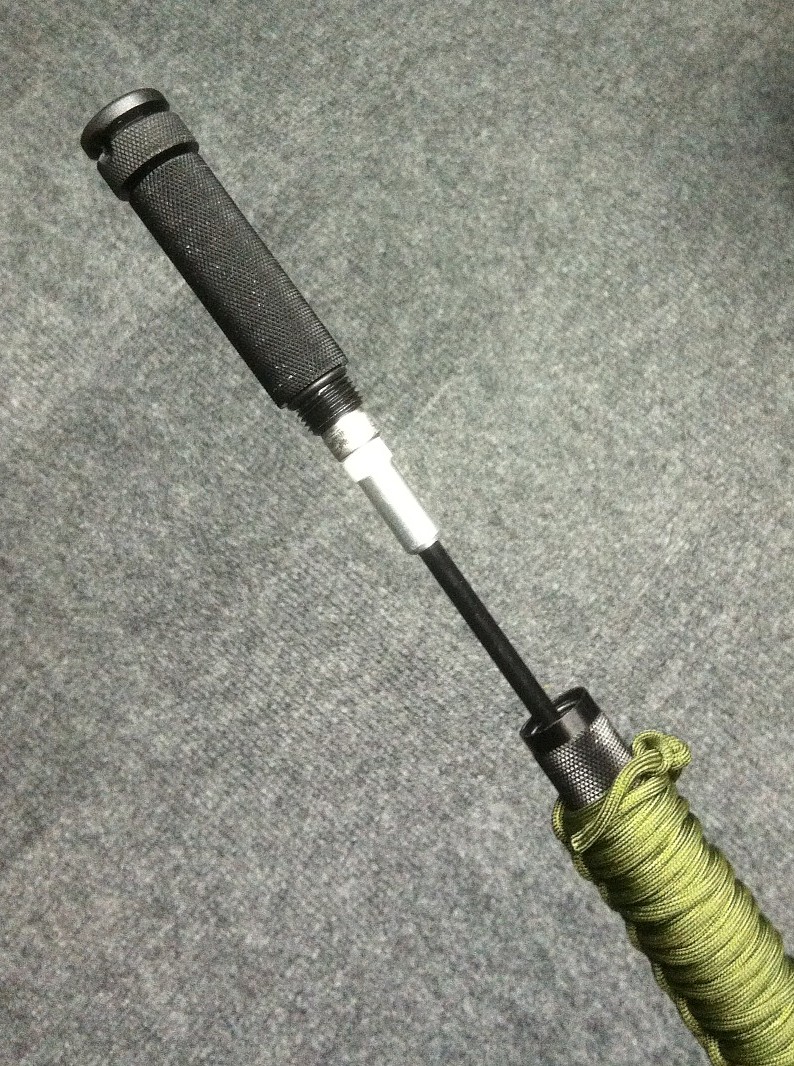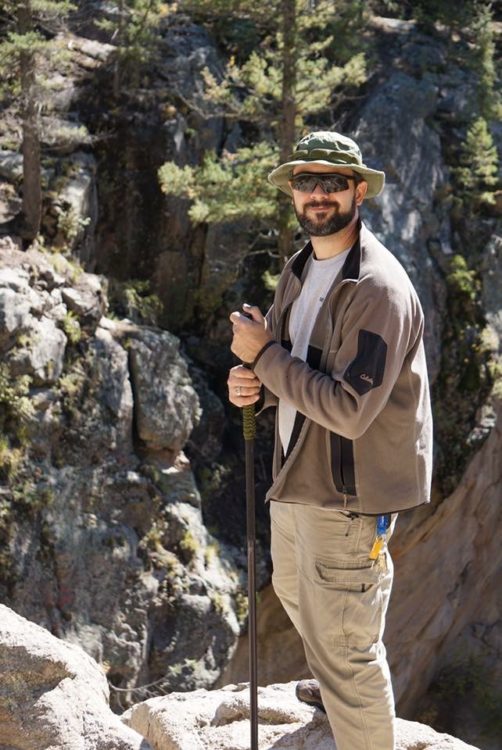I seem to recall reading about The Crawford Survival Staff® in a Martial Arts publication in the mid 1980’s. Ninjas were all the rage at the time, I was a few months into my first martial arts classes, and something that was part staff, part spear, and part blowgun seemed pretty cool to my teenage mind. Alas, my wallet was not on par with my enthusiasm back then, so the information was relegated to the back of my mind for about 25 years.
Fast forward to 2007, I took my wife camping and hiking in Red River Gorge, Kentucky for a few days, but on the third day, my right knee started giving me issues. I fought it, but it bothered me bad enough to cut the trip short. A year or two later while my wife and I were planning a western U.S. road trip with hiking in Colorado, Utah, and Oregon, memories of me limping my way around Kentucky got me thinking about some sort of heavy-duty walking stick. I apparently had mentioned the Crawford Staff to my wife at some point in time because she surprised me with one at Christmas that year.
For those of you unfamiliar with the Crawford Survival Staff®, they are the brainchild of renowned knife maker, Pat Crawford. From the outside, the survival staff consists of 2 hollow aluminum tubes joined by a threaded connector, topped with a knurled handle and tipped on the bottom with a short steel point. Not only does it make the best hiking stick that I have ever used, but it can be utilized as an expedient rifle or camera rest, a support for shelter-building, I have even used mine as an improvised well casing for a “sip straw.” The staff also has some concealed virtues, including a triangular-bladed knife that can be used to convert the staff to a spear, a 3-pronged fishing spear/frog gig, a large ferrocerrium rod, and plenty of storage space for plastic vials of survival equipment like fishing supplies, medications, or whatever else might come in handy. There are a few different types of knife or spear-heads available for it. When empty, the staff can also serve as a blowgun, taking the large size darts, though admittedly the tube is a bit short to get respectable velocities. When someone invents a CO2 or compressed air module to crank the velocity on these up, then I may re-evaluate the usefulness of the blowgun feature.
One of my own, more practical modifications to the staff was attaching a .30 caliber rifle-length cleaning rod to the knurled handle so it could be carried inside the staff. This not only protects the cleaning rod from getting bent or damaged, it also makes for a convenient way to carry the cleaning rod in rough country. I designed this particular modification because I was taking the staff to Thunder Ranch’s High Angle Rifle class and I didn’t want to hike up a mountain with my rifle and gear, only to have Mr. Murphy pay me a visit and slip me a squib load or some other bore obstruction that I would be otherwise helpless to clear. I also wrapped 50′ of paracord around the upper portion of the handle, not only is it a convenient way to carry a decent length of paracord, but it provides a comfortable grip.
I first gained a true appreciation for the utility of The Survival Staff when I took it into Goblin Valley State Park in Utah. Goblin is a very cool place to hike, offering surreal views and plenty of opportunities for scrambling climbs on the rock formations and surrounding cliffs. I found it facilitated access to otherwise almost inaccessible areas. By digging the tough steel point into the rock, one can place their full weight on it to cross large gaps and crevices or use it for support while making steep ascents and descents. While hiking in the mountains of Oregon, the staff proved itself yet again, not only as a hiking aid, but also as field expedient rifle rest, the two separated sections held together to whip up some improvised shooting sticks.
Since then, my Crawford Staff has accompanied me into the wilds of Arkansas, Arizona, Colorado, Michigan, Virginia, New Mexico… it just keeps proving its usefulness. I liked mine so much, I even bought one for my wife and Mr. Crawford custom cut it to size for her.
Of course, there are advantages and disadvantages to using walking sticks. They increase your walking speed by approximately 1 mile per hour and they reduce the strain on the opposite leg by 10 to 18 pounds every step, which translates into tons of weight off the knees for even a two hour hike, but you can’t get somethin’ for nothin’. That weight off the knees slightly increases the strain on the upper body and contributes to larger overall energy expenditure. Even so, I find that walking on steep, rocky trails can be treacherous and having a sturdy support that bites into the ground has saved me many a stumble.
After an incredible amount of hiking up and down mountains over the past few years, no more knee troubles thanks to the Crawford Staff. I am solidly in the camp of “walking sticks are your friend.” Unlike the lightweight, expandable fiberglass trekking poles, however, the Crawford Staff won’t collapse when you put weight on it.
You may not care to carry around all the accessories in it, but if you do any rough terrain hiking and you don’t mind spending a few bucks for a piece of gear that will make a noticeable difference in your rough trail hiking experience and hold up to whatever you throw at it, you might want to check out a Crawford Staff.




